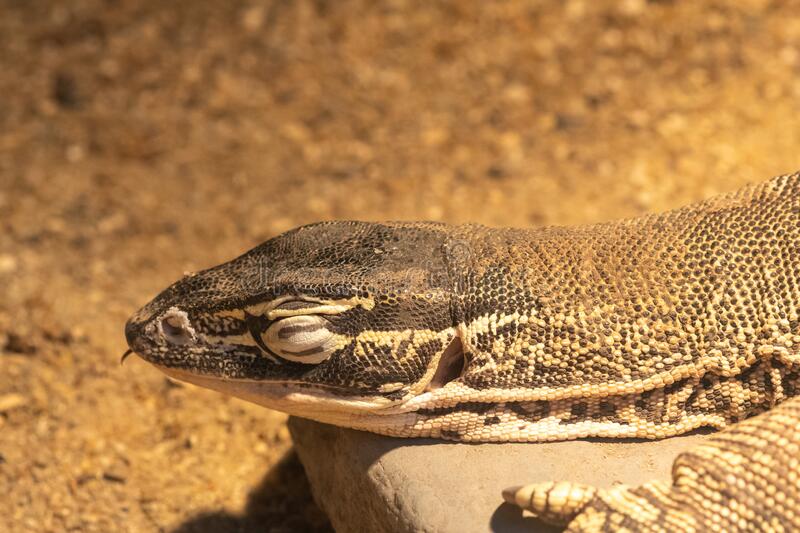ANIMAL: Argus Monitor Varanus panoptes Type of Animal: Monitor Habitat: Coastal areas, grasslands, riparian areas, woodlands, savanna, floodplains, ponds, waterways, mixed forest, tropical rainforest Location(s): S New Guinea, northern & western Australia, Torres Strait islands Appearance: Large lizard w/ off-white/yellow/yellow-green background color & brown to dark tan to black dorsal area background color (Varanus panoptes rubidus subspecies in W & NW Australia reddish), large dark spots interspersed w/ smaller paler spots, yellow ocelli spots forming transverse bands, yellow/yellow-green/off-white on neck/belly, males larger than females, younger lizards more brilliantly colored/patterned than adults, long tail, males have more noticeable front legs Food/Diet: Insects, insect larvae, small mammals, birds (including chicks of large birds), fish, crayfish, worms, snakes, amphibians, eggs, dog food, meat strips, crabs, other lizards (including smaller members of own species), crocodile hatchlings, snails Status in Wild: Stable Conservation: Breeding in zoos, wildlife parks, & herpetoculture Lifestyle: Solitary Additional Info: Called: Male Female Young: Hatchling Group: Solitary Weight: Male: 17-25 lbs Female: 12-14 lbs Gestation: 7-8 months Life Span: 12-20 years Height: Male: 4.5 ft Female: 3 ft Body Length: Male: 4.5-5 ft Female: 3-3.5 ft Young: 2 ft Tail Length: Male: 3 ft Female: 1.5 ft Young: 1 ft Main predators of adults are crocodiles, eagles, dingoes, foxes, dogs, cats, pigs, & larger monitors. Monitor lizards, snakes, & predatory birds prey on hatchlings. Active during the day (diurnal). Like all monitors, they have forked tongue & Jacobson’s organ used to search for prey. These lizards have declined in the Top End of Australia’s Northern Territory due to many dying from eating invasive & toxic cane toads. They hunt by keying in on movement, chasing prey down, & overpowering it. Like other monitor lizards, they have excellent sense of smell. Females lay 6-13 eggs per clutch. They’re avid diggers, creating or taking over burrows to avoid hottest parts of day. While mostly terrestrial, they’re also great climbers & swimmers. Maturity reached at 9 months old. Fun Fact(s): These lizards are rather intelligent. These lizards can be very defensive & unpredictable, making them not suitable for beginner reptile hobbyists. Some individuals do tame down. These lizards are very fast, being able to run up to 100 yards to nearest tree/burrow when chased. Gets name due to ocelli resembling eyes of Argus. Also called Yellow-Spotted Monitor. These monitors often tripod, raising up hind legs & supporting themselves w/ tail. They do this when threatened & to spot potential predators & prey.
